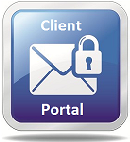You May Receive an IRS Form 1099-K This Year
If you are an employee who works for tips and received more than $20 in tips during July, you are required to report them to your employer on IRS Form 4070 no later than August 10. Your employer is required to withhold FICA taxes and income tax withholding for these tips from your regular wages. If your regular wages are insufficient to cover the FICA and tax withholding, the employer will report the amount of the uncollected withholding in box 12 of your W-2 for the year. You will be required to pay the uncollected withholding when your return for the year is filed.
Effective for 2022 and later years, Congress reduced the threshold for the Form 1099-K filing requirement from $20,000 to a mere $600. So, you might ask, what does that have to do with me? This change can impact taxpayers in several ways, some unexpected, so you may find yourself in for a surprise that can be unpleasant in some situations.
This article explores the several ways taxpayers can be affected. But first we need to review the purpose of the 1099-K and what can occur for you to receive one.
The 1099-K was created by the IRS as a means to detect unreported income by businesses. The IRS does that by requiring third-party settlement organizations such as credit card companies, eBay, Venmo and others to report the transactions they’ve handled for an individual or business on a 1099-K if the gross amount of those transactions exceeds a specified threshold.
Example: Susan, who owns and operates a gift shop, accepts credit cards for purchases made by her customers. Since the credit card transactions are processed through a third-party settlement organization, that third par-ty must issue a 1099-K for the total dollar amount of credit card transactions that Susan had for the year. The 1099-K goes to the IRS and a copy goes to Susan. The IRS can then compare the 1099-K amount to the amount Susan reports as the gross income from her business. The IRS is also aware of, through studies they have conducted, the amount of cash sales certain types of businesses might have. With this information, the IRS can efficiently identify taxpayers who are not reporting all their income and ID them for audit.
Although primarily intended for businesses, there are situations where you may find yourself a recipient 1099-K.
One such situation is where a taxpayer is downsizing and sells personal property on eBay. If the total amount sold is $600 or more the taxpayer will receive a 1099-K. Although these sales are generally not taxable since used personal items are usually sold for less than their cost, the IRS does not know the circumstances of the sale and if the amount is significant, it needs to be reconciled on the individual’s tax return. A sale of personal property that results in a loss, is not deductible for tax purposes. In prior years, because the threshold for requiring a 1099-K was $20,000, a 1099-K was never issued to most non-business taxpayers, so there was no concern about reconciliation.
Many taxpayers are also involved in the gig economy selling their products through Etsy, eBay, etc., or hiring out their services on TaskRabbit.
Others may be driving for Uber or Lyft or making deliveries through Door Dash, Uber Eats, etc.
Some individuals have been meeting their tax responsibilities from these activities while others have not, thus prompting Congress to reduce the threshold. In either case, it is important that these individuals keep records of their expenses associated with their income-producing activities to reduce any tax liability. Here are some examples:
- Cost of goods sold
- Advertising
- Vehicle travel
- Business cell phone service
- Internet service for on-line sales
- Office supplies
- Postage & shipping
- Some may qualify for a home office deduction
Since these activities are generally treated as self-employment income, here are other issues to be aware of:
Self-employment tax – Which is like Social Security and Medicare taxes paid by employees and matched by the employer through payroll taxes. Except a self-employed individual pays both the employee’s and the employer’s share, which combined can total 15.3% of net profit.
Self-employment Retirement – Self-employment Income qualifies for IRA contributions and the very popular Simplified Employee Pension Plan (SEP) where a self-employed individual can contribute a tax-deductible amount of 20% of their net earnings to the retirement plan.
Self-Employed Health Insurance Deduction – Most self-employed individuals can deduct as an above-the-line expense 100% of the amount paid during the tax year for medical insurance on behalf of the taxpayer, spouse, dependents, and children under age 27 even if the child is not a dependent. However, this deduction is limited to the net income from the business.
Hobby vs. Business – Whether the activity is truly a business or just a hobby impacts how the income is reported on the tax return, deductibility of expenses (including medical insurance premiums), whether self-employment tax applies, and if contributions to retirement plans can be based on the activity’s income.
As you can see, all of this can become quite complicated and the penalties for not reporting self-employment income can be severe. Please contact this office about what expenses are deductible for your specific type of endeavor and your business filing obligations.






Leave a Reply